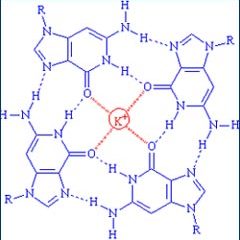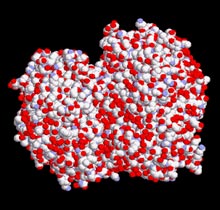Articles and reports from the Life Sciences and chemistry area deal with applied and basic research into modern biology, chemistry and human medicine.
Valuable information can be found on a range of life sciences fields including bacteriology, biochemistry, bionics, bioinformatics, biophysics, biotechnology, genetics, geobotany, human biology, marine biology, microbiology, molecular biology, cellular biology, zoology, bioinorganic chemistry, microchemistry and environmental chemistry.

A team of investigators at Carnegie Mellon University has formed the first hybrid quadruplex of peptide nucleic acids, or PNAs, with DNA, the genetic code. This result opens new opportunities to study the activity of genetic regions occupied by recently described quadruplex DNA structures, as well as providing a new compound that could be used as a biosensor or to block gene activity associated with diseases such as cancer. The research results, published online, will appear in a forthcoming issue o

Could yield biosensors with greater sensitivity, specificity
Scientists at Hebrew University, Israel, in collaboration with researchers at the U.S. Department of Energy’s Brookhaven National Laboratory, have devised a way to use gold nanoparticles as tiny electrical wires to plug enzymes into electrodes. The gold “nanoplugs” help align the molecules for optimal binding and provide a conductive pathway for the flow of electrons. The research, described in the March 21, 2003, issue of

Dutch phytopathologists have shown that ethylene is vital for the protection of plants against bacteria and fungi. This is another function for the plant hormone already known to play a role in plant aging and fruit ripening.
Bart Geraats from Utrecht University demonstrated that plants which are insensitive for the hormone ethylene are hypersensitive to various microorganisms. The research implies that farmers and horticulturalists must be careful with substances that inhibit the effect of

Dutch chemists have visualised how the porous structure of a zeolite catalyst depends on the production method. Zeolite made with carbon fibres as a template, has particles with straight canals that act as highways for the oil components which must be converted into benzene components.
Zeolite is normally given a steam treatment to improve its catalytic properties. As a result of this the mineral acquires a more sponge-like structure. The canals formed ensure that the zeolite crystal become

In the developing brain, nerve cells make connections with one another by extending processes, often over long distances.
The growing tips of these nerve cell processes are guided to their ultimate connection sites by molecular cues in the environment.
A Salk Institute research team has discovered a receptor-protein interaction that guides nerve cells along specific pathways.
John Thomas, professor of molecular neurobiology, working on the fruit fly Drosophila, found tha

The delicate interplay of two chemical signals coaxes stem cells into becoming hair follicles, according to new research by scientists at the Howard Hughes Medical Institute at The Rockefeller University.
The research has implications for understanding hair growth and hair-follicle development, and it may also help explain how diverse structures, such as teeth and lungs, are formed or how some forms of skin cancer develop.
In an article published in the March 20, 2003, issue of the